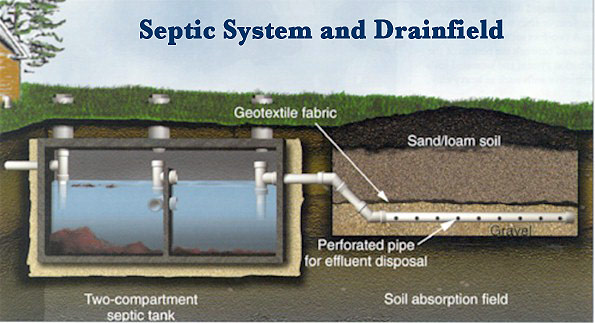
Here is a list of do’s and dont’s provided by the Clark County Health department. The performance and life span of your septic system is directly dependent on how the system is operated and maintained. With proper care, a typical system should operate relatively trouble free for between twenty and thirty years.
DO
- Learn the location of your septic system, drainfield and reserve area, and keep a sketch of it with the maintenance records.
- Have your septic tank inspected by a certified O & M specialist as required per CCC 24.17.
- Keep your septic tank cover accessible for inspections and pumping. Install risers if necessary.
- Keep detailed records of repairs, pumpings, inspections, permits, and other maintenance activities.
- Conserve water to avoid overloading the system; stagger wash load days and repair any leaks.
- Divert other sources of water (roof drains, house footing drains, sump pumps) away from system.
- Contact a professional when you experience problems with your system.
- Obtain a permit from Clark County Public Health (397-8428) for all repairs and alterations.
- Use household cleaners in moderation and follow directions on labels.
DON’TS
- Don’t enter a septic tank; toxic gases are produced in the tank that can be deadly within minutes.
- Don’t drive, park, or do any activity that will compact the soil on top of the system.
- Don’t plant anything over or near the drainfield except grass. Roots can damage the drain lines, and trees may shade the drainfield. Excessive irrigation over or near the system may also cause damage.
- Don’t dig into the drainfield or cover it with any hard surface or building.
- Don’t repair your system without a required permit from Clark County Public Health (397-8428).
- Don’t use septic tank additives.
- Don’t use your system as a trash can for grease, coffee grinds, cigarette butts, diapers, sanitary napkins, tampons, condoms, paper towels, plastics, cat litter, latex paints, pesticides, any hazardous chemical, or other non-biodegradable substance.
For more information on how to properly maintain your septic system. Download this PDF from the Clark County Health Department.

Image Source: Produced by Agricultural Communications, The Texas A&M University System, EPA


